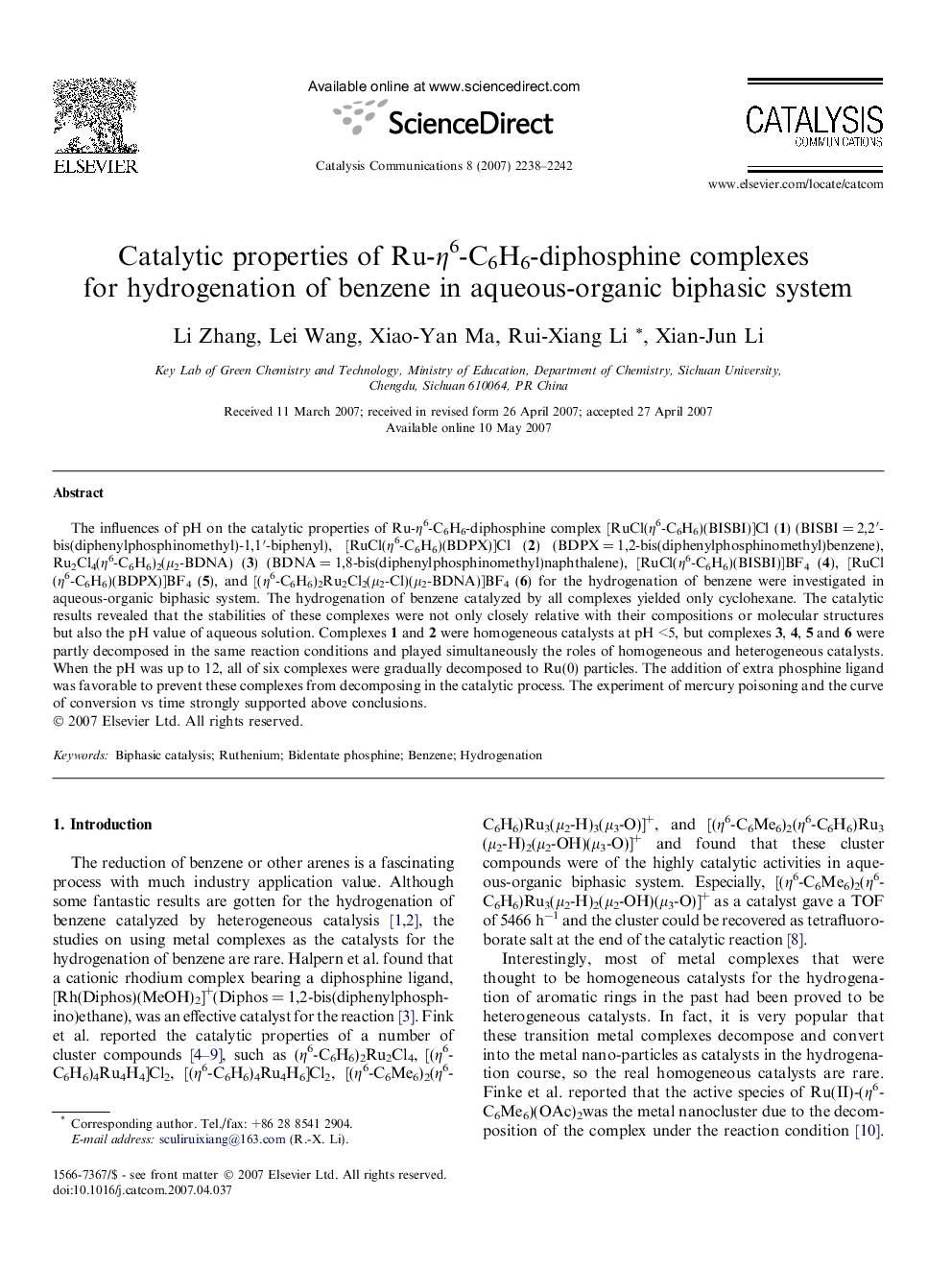| Article ID | Journal | Published Year | Pages | File Type |
|---|---|---|---|---|
| 52515 | Catalysis Communications | 2007 | 5 Pages |
The influences of pH on the catalytic properties of Ru-η6-C6H6-diphosphine complex [RuCl(η6-C6H6)(BISBI)]Cl (1) (BISBI = 2,2′-bis(diphenylphosphinomethyl)-1,1′-biphenyl), [RuCl(η6-C6H6)(BDPX)]Cl (2) (BDPX = 1,2-bis(diphenylphosphinomethyl)benzene), Ru2Cl4(η6-C6H6)2(μ2-BDNA) (3) (BDNA = 1,8-bis(diphenylphosphinomethyl)naphthalene), [RuCl(η6-C6H6)(BISBI)]BF4 (4), [RuCl(η6-C6H6)(BDPX)]BF4 (5), and [(η6-C6H6)2Ru2Cl2(μ2-Cl)(μ2-BDNA)]BF4 (6) for the hydrogenation of benzene were investigated in aqueous-organic biphasic system. The hydrogenation of benzene catalyzed by all complexes yielded only cyclohexane. The catalytic results revealed that the stabilities of these complexes were not only closely relative with their compositions or molecular structures but also the pH value of aqueous solution. Complexes 1 and 2 were homogeneous catalysts at pH <5, but complexes 3, 4, 5 and 6 were partly decomposed in the same reaction conditions and played simultaneously the roles of homogeneous and heterogeneous catalysts. When the pH was up to 12, all of six complexes were gradually decomposed to Ru(0) particles. The addition of extra phosphine ligand was favorable to prevent these complexes from decomposing in the catalytic process. The experiment of mercury poisoning and the curve of conversion vs time strongly supported above conclusions.
